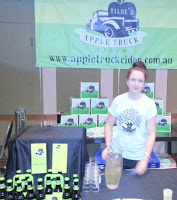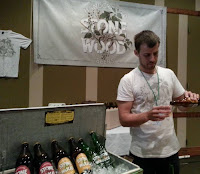Well, it's over and done for another year
(unfortunately), but on the bright side it was a really enjoyable day at the
Fairmont Hotel. It's a bit different having a craft beer festival in a swanky hotel, mind you I was glad to be inside as the Blue Mountains had returned to winter mode with cold weather, thick fog and rain. This did not deter the beer enthusiasts, with a steady stream of couples, families and groups of mates all through the day.
Hosted by the guys from Sydney Brewery (formally Dr Schwartz) the festival was a great success, and with over 150 presale tickets we look forward to hearing what the final attendance numbers are. No doubt the dreary weather will have kept some away - but thats their loss!
My Beer of the day was Paddo Ale from Sydney Brewery.
Wife's Pick of the day for beer is still in contention between Paddo Ale from Sydney Brewery, and Pacific Ale from Stone & Wood. But Bilpin Cider took the day cider-wise.
Held in one of the Fairmont's spacious conference rooms, the set up was excellent with plenty of room between exhibitors, along with tables and chairs and stand up bars to savour your beer at. There was also plenty of water jugs around to keep you hydrated.
James Squire had Hop Thief, Unfiltered stowaway Ipa and Fifty Lashes.
Little Creatures had White Rabbit Light Ale and Dark Ale, Pipsqueak Cider and Pale Ale.
Bilpin had Bilpin Cider
Tilse had Tilse Cider
Stone and Wood had Pacific Ale, Jasper Ale and a Lager.
Two Birds had "boobies" (they said it, not me), as well as Sunset Ale and Golden Ale.
Rocks Brewing had The Convict Lager, The Pickpocket Cider, The Hangman Pale Ale and later in the day brought out The Governor Golden Ale and The Boxer RedAle.
 Mudgee Brewing
Mudgee Brewing had a
Porter, a
Spring Ale and an
IPA.
Beer appreciation classes were also held throughout the day, showcasing different beers each session, what they were made from, and some choices of what to pair them with.
This one is being run by Mike and his team of brewers from Sydney Brewery.
We would like to thank Mike and his team from Sydney Brewery for a great day with great beers and we look forward to coming back next year.













































